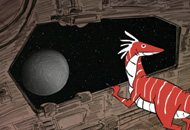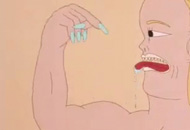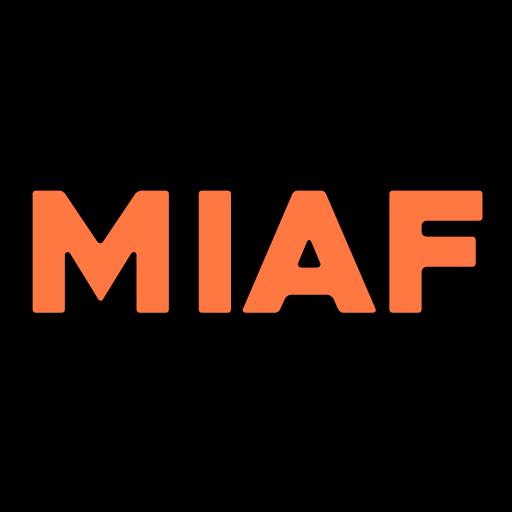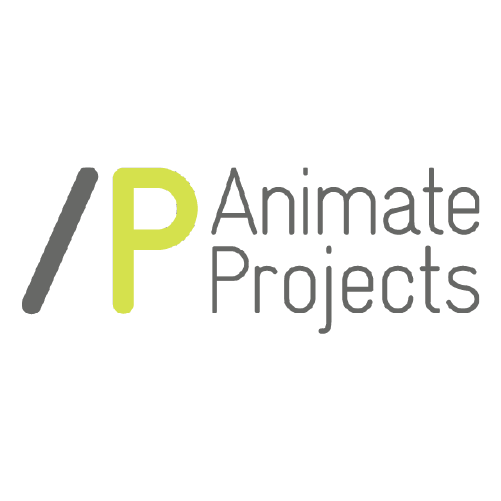
At The Horse Hospital book tickets
To fully understand the extent of the contribution that the Quickdraw Animation Society has made to the art of animation requires more – a lot more – than lining up a roster of the best and most screened films that emerged blinking into the light with a QAS tattoo stamped on their closing credits. Beyond, or perhaps beneath, those bright lights resides an organisation that has had a special, prolonged and varied impact on several generations of established animators, curious animation fans and a wandering army of people who have been exposed to wildly varying infection levels of the animating bug.
This programme brings together the most important talons of QAS’s embrace of and commitment to the art, the appreciation and the makers of animation. The programme line-up first glimpses into the legendary workshops that QAS stages for first time, inexperienced ‘animators’. It then travels on to the workshops and co-operative/collective projects that have been made up of more experienced and established animators (often graduates of the former). And it finishes up with a sampling of the QAS alumni that have taken so much of what they harvested within the fertile plains of the QAS homeland and gone out into the wider world and continued on their own diverse paths.
QAS is a teacher! The library alone can offer up to a motivated and focused student of the artform more than a lot of fee paying schools could hope to pass on. But the passion, the joy… the NEED to teach animation is what sits at the base of everything that QAS believes in and stands for. QAS has workshops for kids, it has workshops for youth at risk, for Aboriginal youth, for people with a burning fascination for animating or people that have no clue how to kill a few quiet weeks and foolishly thought doing a bit of animation would be easy. QAS has welcomed them all and taken them as it found them.
The workshops. Trying to write this up as a numbers game is a fool’s errand but the temptation to tread this path of record lingers because, to some extent, it offers up a snapshot of the incalculable contribution that QAS has made via its extensive programme of workshops over the years. Simply arriving at a definitive number of the workshops held would require a more or less forensic surgery of the QAS records library. And ascertaining the number of participants? A lesser correspondent would drop in a big number here, safe in the knowledge it could not be challenged.
The more resolute way to value the 20+ years legion of workshops, is to understand what has gone into their creation, what expectations have been placed on the participants and the results that have emerged.
If you come to QAS to learn to animate, you are taught to animate and sometimes that hurts. This is not day-care with moving pictures. And the best of the resulting films reflect that gradual, sometimes grudging transfer of passion that seems to be the hallmark of venturing into QAS HQ for long enough.
In the best of these workshop films, a sense of emerging empowerment, skill and knowledge flows through them. These films will never in-and-of themselves have their filmmakers walking down too many red carpets but witnessing a transition from person-to-animator is an enduring ingredient of these workshop films.
Over the years a trio of key workshop types has emerged at QAS. The Youth Animation Project (YAP), the Aboriginal Youth Animation Project (AYAP) and the ever popular Animation Lockdown have been the most popular vehicles for ‘accidental’ animators to be drawn under the spell of animation by a succession of QAS wizards intent on passing on the white magic, dark arts and tricks of the trade. A step beyond – or perhaps galloping gloriously alongside of – the set workshop structure that QAS offers enthusiastic first stagers and naive newbies are the variety of special, one off workshops and collaborative projects that an organisation like QAS cannot but help to fertilise. The inspirations and motivations are as varied as their participants and range from “seemed like a good idea at the time” across the scale to the creation of films such as C’est La Vie: The Chris J. Melychuk Story (which features in the Quickdrawn Animation Society 30th Anniversary: Retrospective screening).

The middle section of this programme picks three wonderful films that sprang from three very diverse sources. Folk Tunes (2005) is riven through with the pure, well-oiled joy of creating images and making them move. It’s animation on a stick and comes across as about as much fun to create as can be legally enjoyed by the fifteen QAS animators.
When The Water Is Sick, The World Is Sick (1999) comes from a much different place. Although many of the young participants emerged from the Kids animation workshops conducted at QAS through the 1990’s, the project itself was undertaken as part of an international project instigated by ASIFA, to encourage groups of animators around the world to create films about pollution in an attempt to raise awareness about the issue. When The Water Is Sick, The World Is Sick is as good an ambassador as any for demonstrating QAS’s astonishing ability to create animators. Years after its completion, Kurytnik reels off a list of the young filmmakers involved who went on to a career in animation.
“Later after high school Jackie Koehler went on to take animation at Emily Carr in BC, taught herself Maya and won a big Toon Boom scholarship at Ottawa, she’s currently an animator at Reel FX. Another of the students, Jason Poulsen, went to work at Nelvana, but he’s now got his own band in Vancouver, Jason and the Diatonics. Jarett Sitter graduated from ACAD and is an illustrator, Tia Halliday is a visual artist and teacher at ACAD, Jacelyn Hart is an interpreter in Ottawa.”

For so many people in the animation community, QAS is deeply connected to abstract, cameraless animation. Richard Reeves and Don Best are the most acknowledged talismen of that connection but some part of the living, contemporary spirit of this most elemental, intriguing technique, sweetens the air and charges the atmosphere of the Quickdraw Animation Society. It is a type of animation that leaves no residual traces of its completion process.
The filmmaker works directly on to the film stock – there are no drawings to marvel over, no puppets to put on a shelf, no storyboards to take down from the wall and preserve. And for some reason, one of the cameraless animation vortexes seemed to swirl over the Quickdraw Animation Society for a long time.

No single film demonstrates this vortex touchdown point so comprehensively as Scratch My Shorts (2001). Quite simply, this film could not have been made anywhere else. Ten cameraless animators coming together to create a work- shopped film under the production eye of Carol Beecher, herself an accomplished cameraless animator, and the mentorship of Richard Reeves.
From this point in the programme, we open up the atlas and start tracking some of the QAS Alumni. If it is true that ‘something’ about Calgary made it possible for the Quickdraw Animation Society to take root and survive in Calgary, then it is probably true that some of those same qualities meant that not everybody who learned to animate there was going to stay there. And so the alumni is spread far and wide and have, individually, taken some interesting paths.
Ian Milne now lives and works in Melbourne, Australia. But in 2006 he was attending the Vancouver Film School when he first heard about the Quickdraw Animation Society.
“We were shown some of Richard Reeves’ films in class and I really liked them. I had a summer break in Calgary in 2011 and felt like animating something during that time”, he says. “I volunteered to make an animated short for QAS in June of 2011. I left at the end of July 2011. It was a great experience for me.”

That film was The Explorasaurs which turned out to be “a great warm up exercise” for his first “real job” back in Vancouver, something that turned out to be much harder than he imagined. But he credits his experience at QAS with being a valuable stepping-stone for that experience.
Martin Warszawski credits QAS as being a major launch pad for his career as a professional animator. Immediately after graduating from the Alberta College of Art and Design (ACAD), he first secured a three-month residency at QAS to create major outdoor projections for their GIRAF festival which, in turn, lead to a six month residency as an Assistant Animation Instructor in the AYAP Workshop Programme. He has gone on to work for local company Kudos as their animator, illustrator and designer as well as a number of other impressive one off and freelance projects.

His stylishly quirky film The Monstrosity (2010) emerged in the midst of all of this and is a calling card for a young animator with a very big future stretched before him.
The QAS magnet is strong. It attracts characters from a range of peripheries. Local musician Chad Van Gaalen might get to ware this tag. Described by one QAS long-termer (with affection) as a “a mad boy/child genius” after he submitted a Tupperware container holding his excrement wrapped in a hot dog bun as a graduate art project, Van Gaalen carved a name for himself locally as an indie singer-songwriter of significant talent. Latching onto the animation of Bruce Bickford, Van Gaalen became obsessed with animation and taught himself a number of animating techniques at a series of all-nighter sessions at the Quickdraw Animation Society production facilities.

This lead to him animating the music videos for a number of his singles and the results are a wondrously warped fun-romp with more than a psychedelic edge to them. Arguably the most ‘coherent’ of the collection is the video he made for Red Hot Drops in 2005 which is an unhinged imagination cut-loose channelling past early masters of the form such as Vince Collins and Sally Cruickshank.
It seems fair say that Jacqueline Koehler got her start at QAS. “I went to QAS when I was fairly young, 8 or so”, she says. Instead of enrolling me in something like soccer camp, my mom found the equivalent to an “animation camp” I was totally down with that.”

Koehler was one of the young animators invited to work on the When The Water Is Sick, The World Is Sick project and has no problem summonsing a catalogue of wonderful memories during the making and subsequent screenings of that film. Koehler’s graduate film, The Life And Death Of Wiggly Chew (2007) shows an emerging animator with an advanced understanding of how to make a character move, how to exploit the ‘stretch-and-squash’ properties of her protagonists and how to give them the widest range of expressions and emotions utilising a fairly economical toolbox.
Warren Leonhardt might not automatically register as a household name – but his work does. As a professional storyboard artist he has worked on many of the biggest animated blockbusters around and for some of the biggest companies. His client list includes – Warner Bros, Sony Pictures Animation, Weta, Walt Disney Animation Canada, Spumco and Nickelodeon. He is currently working at Blue Sky. However, winding the clock back to a time long, long ago when all of the years stated with a “19” and he emerged, undistinguished from one of Kevin Kurytnik’s “Introduction To Animation” courses at QAS. Kurytnik vividly remembers Leonhardt returning to re-do the course. “I want to do this for a living”, Kurytnik recalls him saying.

After QAS he went on to do the two year course at Sheridan College and whilst there completed an odd ball little man-and-dog film called Dog Drawn It (included in this programme) and a completely experimental piece of sand animation that played with perspective and cleverly inverted the viewers sense of up and down. These two pieces (particularly the inexplicable piece of sand animation) caught the eye of some industry recruiters and his formal career was launched.
An incredibly important piece of the real estate that makes up the QAS alumni story is occupied – freehold – by Malcolm Sutherland. For almost a decade Sutherland has been a staple of the international animation festival circuit with a regular stream of highly inventive and thoughtful films turning up almost every year.
The gentle inner voices that encourage their master to create these films express an extremely diverse collection of inspirations and subjects with an equally diverse of techniques mastered in the process. Sutherland is yet another animator who caught the bug and learned the ropes under the challenging tutelage of Kevin Kurytnik.
“At QAS I met Kevin Kurtynik, who was the instructor of the class I took”, Sutherland says. “He has since become a mentor and friend, but it was meeting him more than anything that became the catalyst for my interest in animation. He opened my eyes to the world of animation, and gave me the courage to be a more fearless animator.”

Sutherland is an animator’s animator. His ability to concoct images that imbibe a wide range of influences and reconstitute them as something that simultaneously speak entirely for themselves AND allow a wide open avenue for the audience to interpret them to their hearts’ content is beautifully, monumentally captured in Lightforms (2010).
Presenting the opposite side of the very same coin is Birdcalls (2006), a film that says more about how sound is presented audibly and in tandem with its visual triggers than almost any film one can think of since some of McLaren’s earlier treatises on the subject.
The auteur animation environment is a veritable rainforest of original voices and visages. The canopy teems with inhabitants of every bright hue while the forest floor provides a refuge and energy source for the creatures who do their best work feeding from that lies there.

The broad dimension that exists between those extremes is a space filled with some of the most indefinable potential Icaruses of the artform. Their work thrills its audience for its unconscious display of the flimsy, risky framework that sustains it in flight.
This describes perfectly the work of another key QAS alumni, Amy Lockhart. Her films will never resonate with an audience waiting for dazzling and expensive animated special effects. They would be misinterpreted as a plane crash in the making instead of a risky flight, vital and alive soaring the heights relying on a combination of bravado luck and carefully calculated, hard learned risk.
“I heard about Quickdraw from Helen Hill”, says Lockhart. “She first taught me experimental animation and 16mm film and sound. Then I went to Quickdraw to do a 5-month residency. I learned more traditional character animation, with a focus on timing from Kevin Kurtytnik.”
Her connection to iconic uber-indie animator Helen Hill is obvious – when you fly low enough to recognise the terrain. Hill’s life story is one that still has the power to break the hearts of those in the North American independent animation community that knew her or loved her work (or vice versa). Originally American, she spent much time in Canada after marrying her husband Paul Gailiunas, a Canadian Alberta local. Graduating from Cal Arts in Los Angeles in 1995, Hill moved to Canada with Gailiunas and from an unlikely base in Halifax (Nova Scotia), crafted a body of work that would impress and influence a sub-strata of a generation of independent North American animators.
Answering the siren call of “home”, Hill and Gailiunas (and a small menagerie of cherished animals) returned to the US, settling in New Orleans. In the immediate aftermath of Cyclone Katrina, Hill was shot dead by a stranger who was probably responsible for the armed hold up of a small hotel at the end of her street shortly beforehand. Despite whatever best attempts the police could muster, Hill’s killer was never identified. Such is life in the land of the free. Where nobody is allowed to take toothpaste onto an airplane on the infinitesimally tiny chance they might be concocting a plot to blow up the plane, but where a measurable army will go to the barricades to demand the freedom for anybody to anonymously brandish a concealable killing machine that can, and is oft used, to kill innocent strangers.
Perhaps it was an unremarkable event – while there were no exploded airplanes that day, Hill’s senseless and unsolved murder was but one of SIX that occurred in New Orleans on January 4th, 2007, a city of less than half a million people. It’s hard to follow the logic path through this, let alone divine the vein of justice.
Still, her work lives on and is being re-translated over and over again by the likes of Lockhart.

Finesse is not the binding agent of these films. Immediacy, a sense of hands on authenticity, a very real feel that you are being buffeted in a very bumpy draft by the energy stream of an artist whose priority is to get the work completed and in front of you with all of its rawness, rough edges and imperfections embedded in its jet stream are the hallmarks of this style.
And Lockhart delivers this over and over. Walk For Walk (2005) seemed like the obvious pick from the extensive Lockhart gallery because of its obvious connection to QAS and its painfully resonating intersections with Hill’s works which so influenced it.
“I did a lot of video pencil tests to test out motion and techniques – I developed a bunch of walk cycles and filmed a test of them on 16mm. I later developed them into an interactive flash”, recalls Lockhart. “That would have been in 2000. Then in 2003 I think… or 2004… I went to QAS to actually film them as Walk For Walk. It was in February and I stayed there for around 3 months I think.”
Malcolm Turner, LIAF Co-Director
And thus concludes the first of our QAS Celebratory programmes. Read on to find out more about the second – Quickdraw Animation Society 30th Anniversary: Retrospective.
















